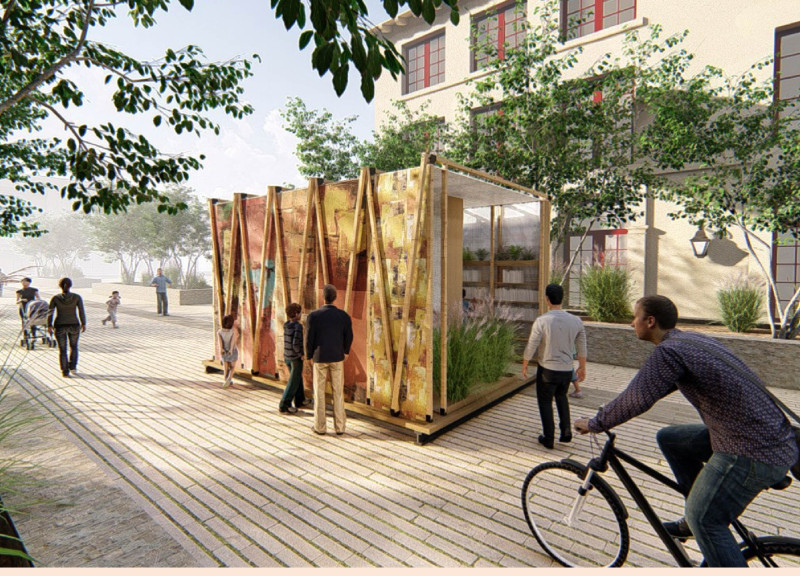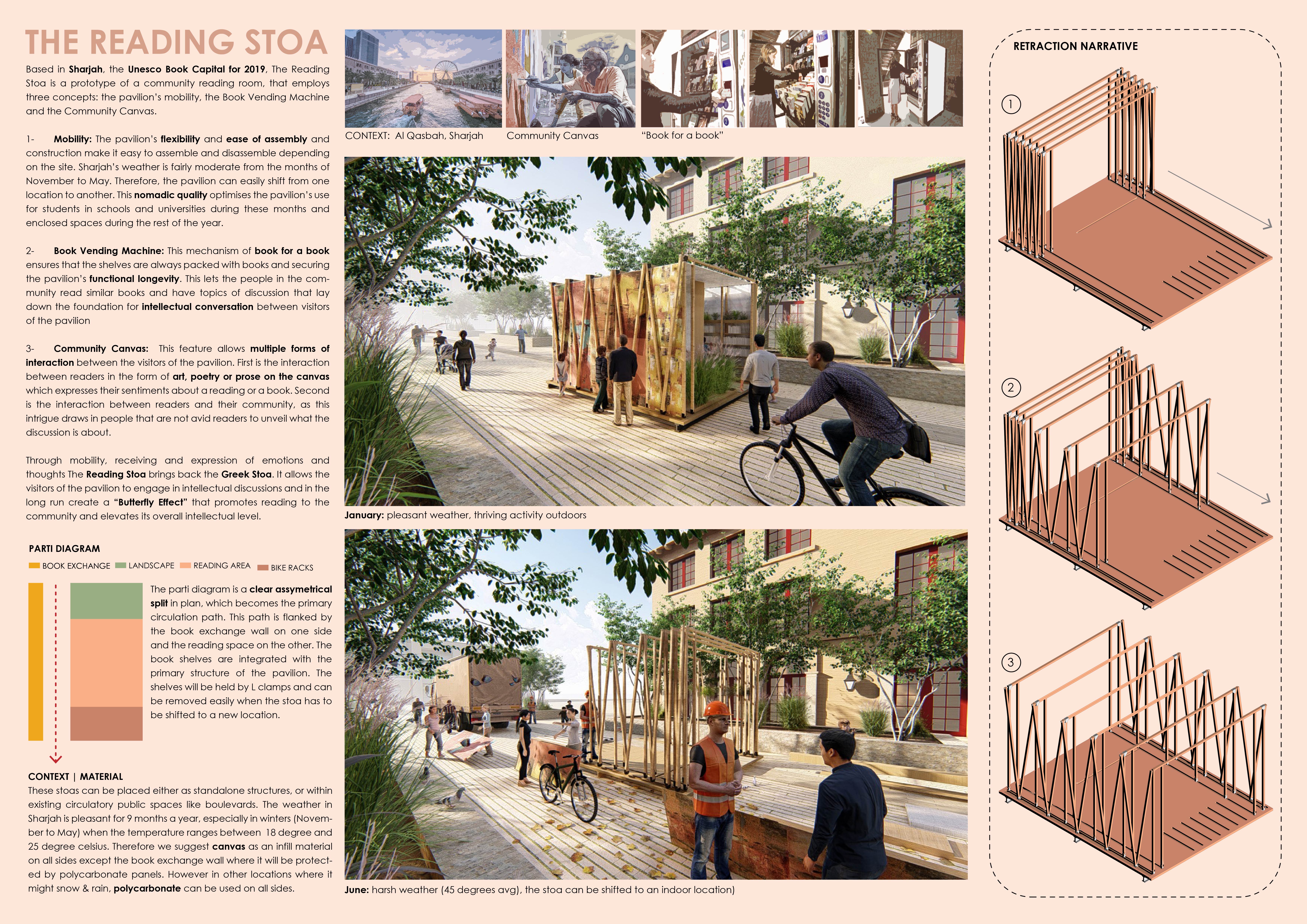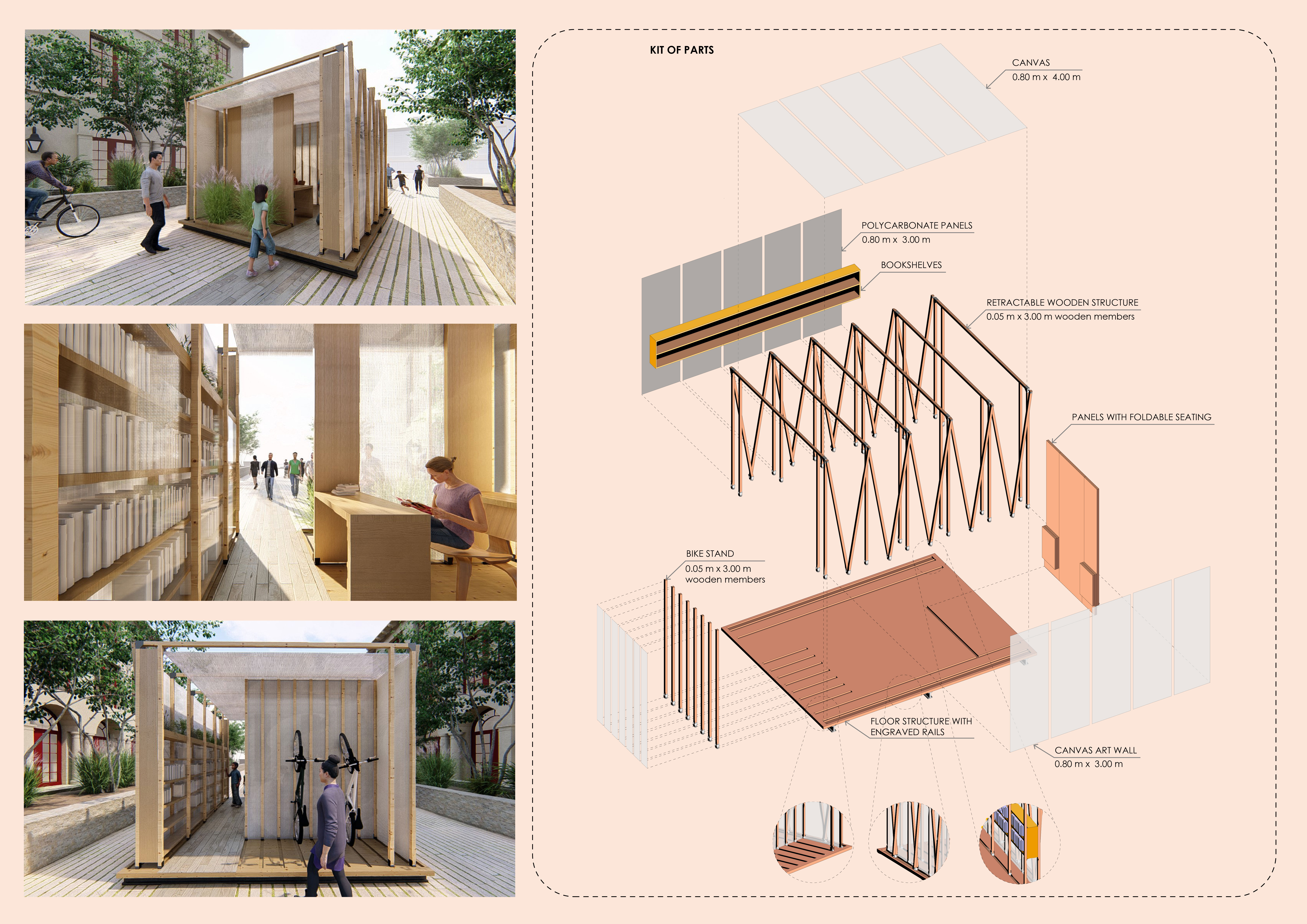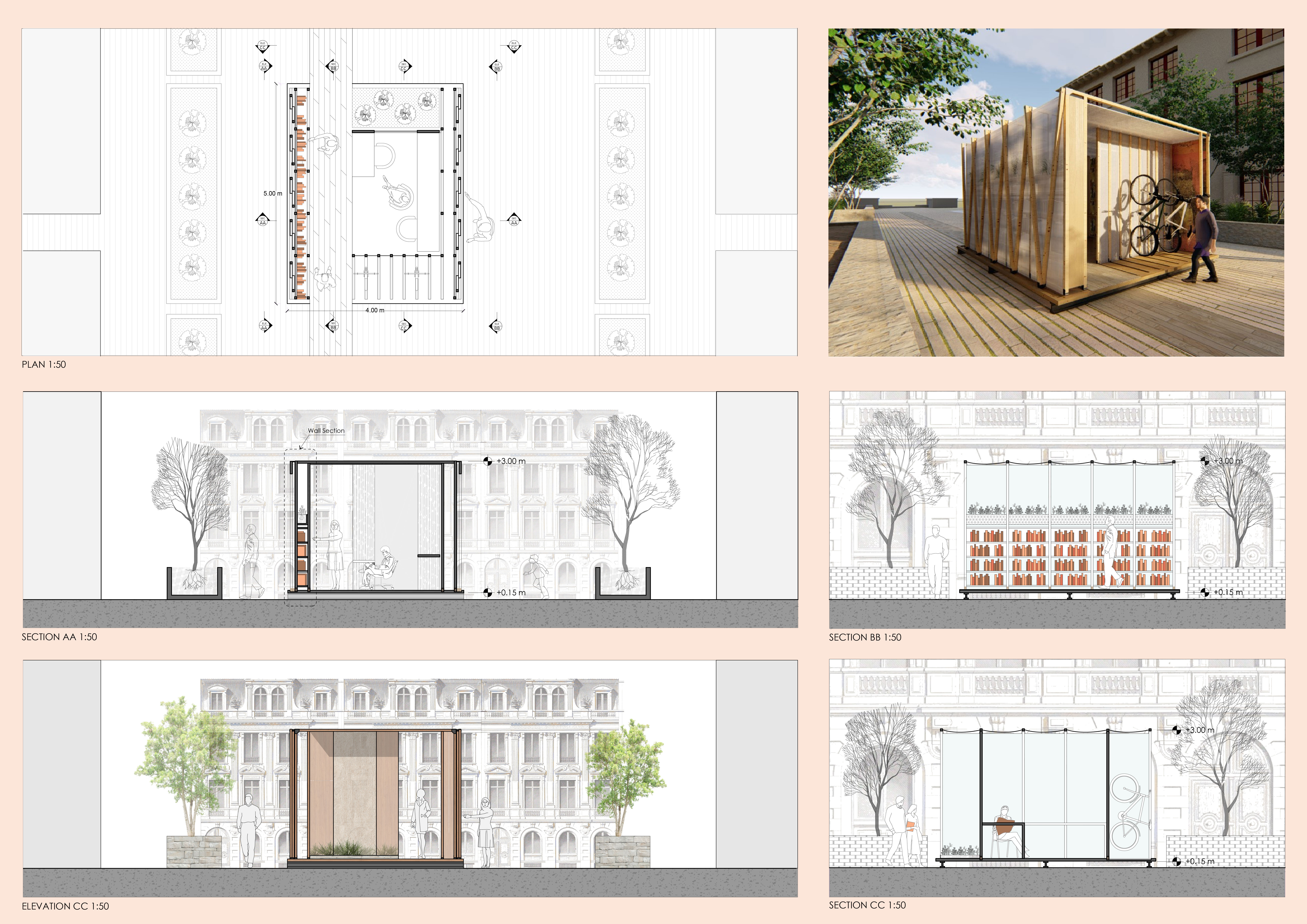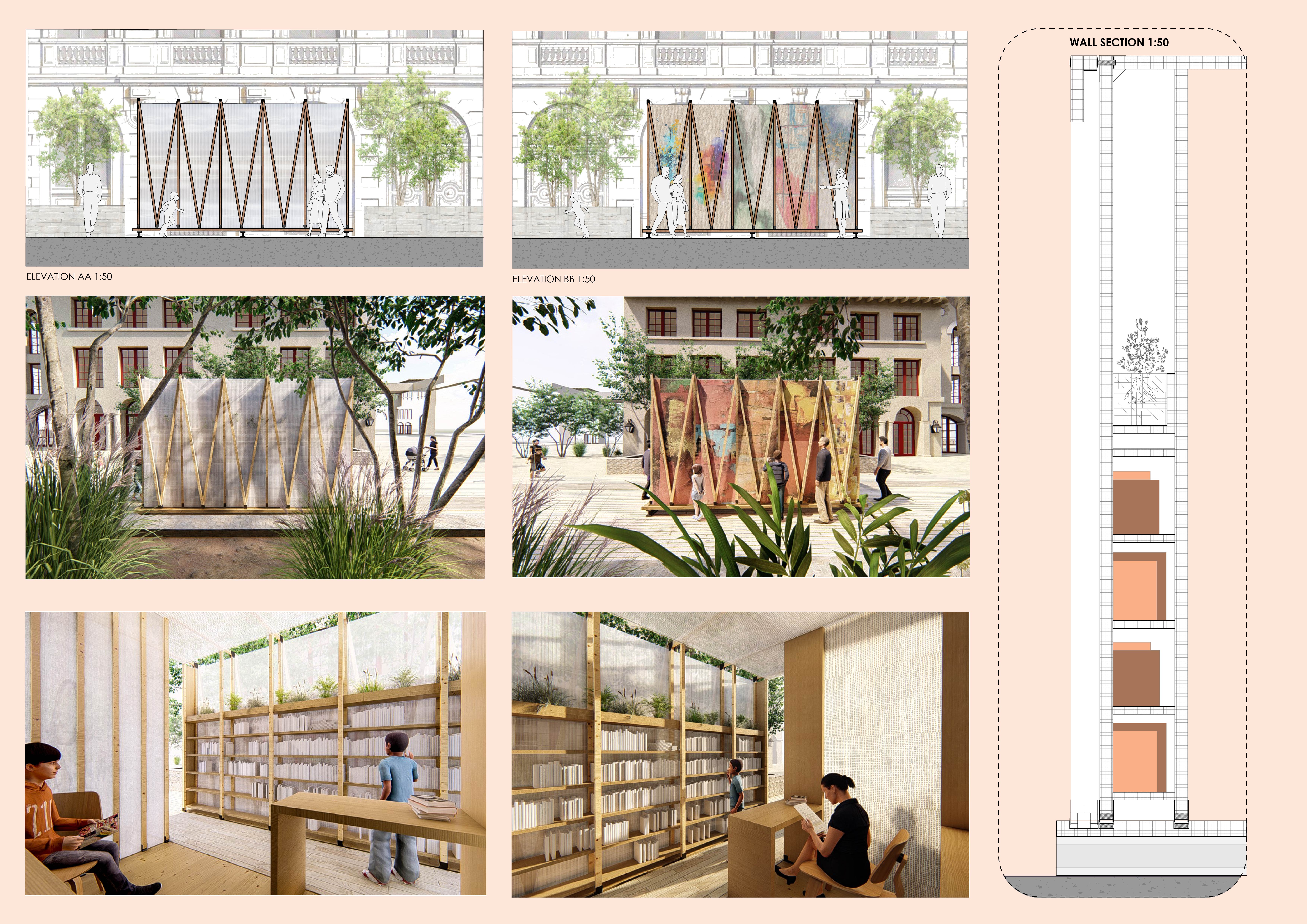5 key facts about this project
The Reading Stoa is located in Sharjah and focuses on promoting literacy and engaging the community. Situated in the UNESCO Book Capital for 2019, the pavilion provides a flexible space for reading that caters to both students and the general public. The design is centered around the concept of mobility, allowing the structure to adapt to different settings and ensuring its usability throughout the year.
Mobility is a fundamental feature of The Reading Stoa. The pavilion can be easily assembled and disassembled, which allows it to be relocated according to community needs and events. Given Sharjah's mild climate from November to May, the pavilion can be effectively utilized during this period, particularly for educational activities in schools and universities. This flexibility ensures that the reading space meets the needs of its users while remaining engaging and relevant.
A key element of The Reading Stoa is the book vending mechanism that operates on a "book for a book" principle. This design encourages visitors to actively participate in the exchange of books, which helps to foster a sense of community. By keeping the shelves stocked, the pavilion facilitates discussions and interactions among users, turning the space into a lively environment for sharing ideas and experiences.
The Community Canvas adds further depth to the design by inviting visitors to contribute their thoughts and creativity inspired by literature. This feature allows for a range of artistic expressions—such as art, poetry, and prose—creating a platform for various voices and viewpoints to come together. Engaging with literature in this way goes beyond traditional reading, incorporating diverse forms of expression that enhance the cultural interactions within the pavilion.
Details in the design include an asymmetrical layout that creates a primary circulation path linking the book exchange area with the reading spaces. The integration of bookshelves, secured by L clamps, makes the pavilion user-friendly and adaptable. The design also features canvas as an infill material, which provides protection and flexibility, while polycarbonate panels form the resilient book exchange wall. These thoughtful choices contribute to a functional and inviting pavilion that serves its community effectively.


